Supermicro AS-1123US-TR4 Performance
As mentioned earlier in this article, we swapped processors from throughout the AMD EPYC 7000 range. AMD has many SKUs in their range capable of dual socket operation, so we picked a few samples to show how incrementing CPU levels impact performance. Running through our standard test suite generated over 1000 data points for each set of CPUs. We are cherry picking a few data points to give some sense of CPU scaling with each solution.
Python Linux 4.4.2 Kernel Compile Benchmark
This is one of the most requested benchmarks for STH over the past few years. The task was simple, we have a standard configuration file, the Linux 4.4.2 kernel from kernel.org, and make the standard auto-generated configuration utilizing every thread in the system. We are expressing results in terms of compiles per hour to make the results easier to read.
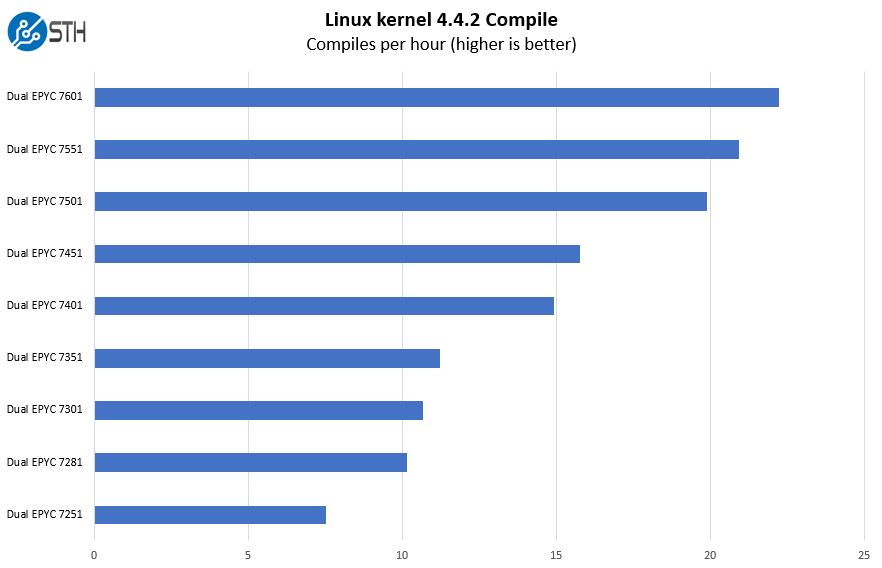
Since we are not doing a CPU review, we wanted to show the relative performance of the different CPU options for the system. Here you can see that there is a wide range of performance options with greater than 4x scaling throughout the SKU stack. Here is a quick look at a select set of Intel Xeon results added in:
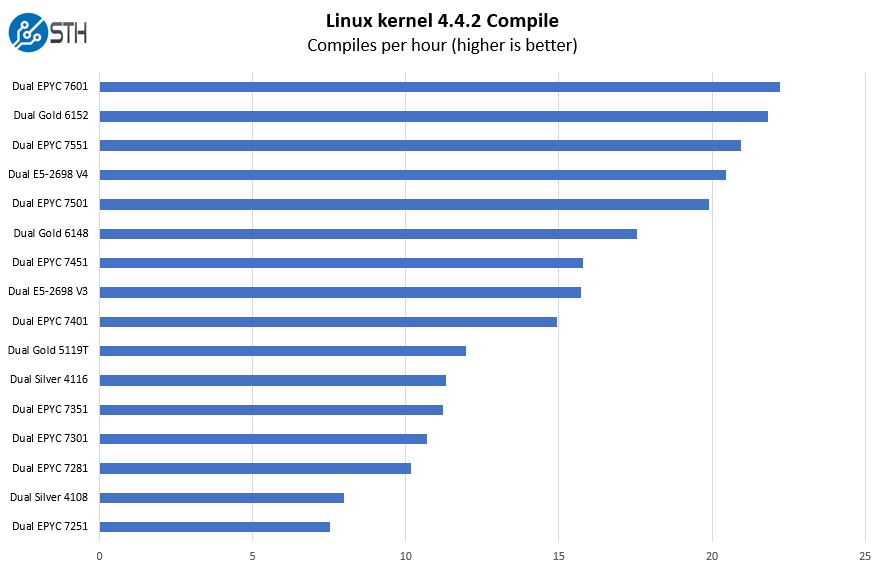
As you can see, the AMD EPYC 7000 series is covering a large swath of the Intel Xeon Scalable (Skylake-SP) product line and has a strong consolidation case over previous generation parts.
c-ray 1.1 Performance
We have been using c-ray for our performance testing for years now. It is a ray tracing benchmark that is extremely popular to show differences in processors under multi-threaded workloads. We are going to use our new Linux-Bench2 8K render to show differences.
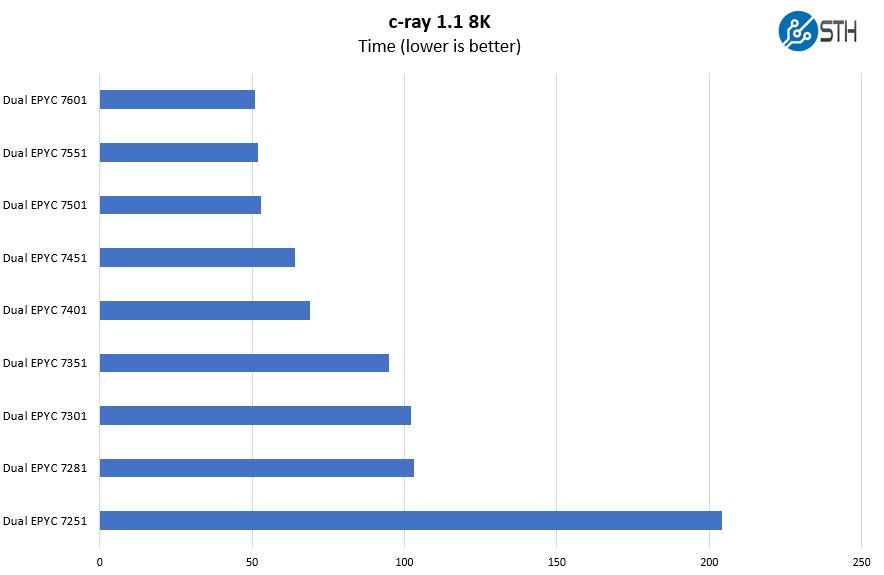
The options for the Supermicro AS-1123US-TR4 perform well on the c-ray rendering benchmark. AMD EPYC has great local cache latencies that this particular benchmark exploits. The dual AMD EPYC 7251 skews the chart results here given it is the only 8 core solution.
7-zip Compression Performance
7-zip is a widely used compression/ decompression program that works cross-platform. We started using the program during our early days with Windows testing. It is now part of Linux-Bench.
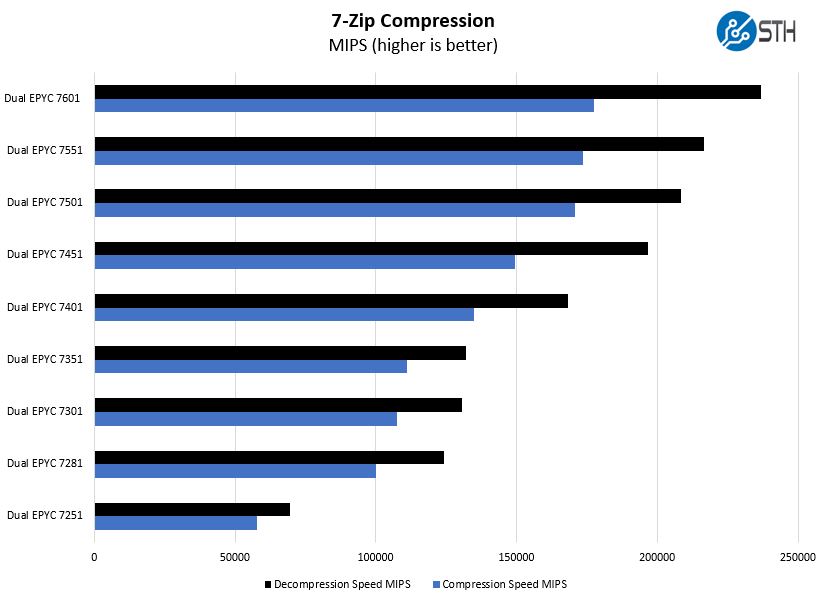
On the compression side, one can see the range spans a fairly large range in the Supermicro AS1123US-TR4. We think that those purchasing the server will look above the dual AMD EPYC 7401 in the SKU stack to get a great price/ performance ratio.
OpenSSL Performance
OpenSSL is widely used to secure communications between servers. This is an important protocol in many server stacks. We first look at our sign tests:
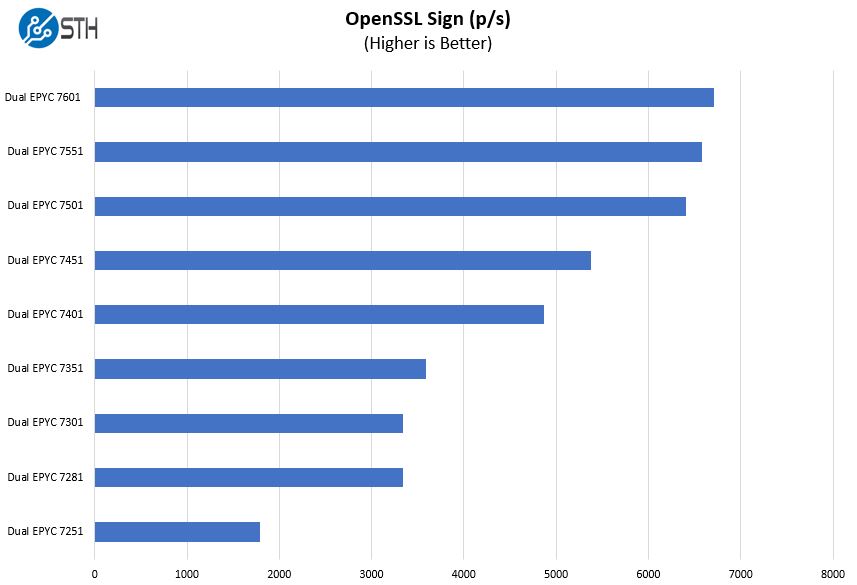
Here are the verify results:
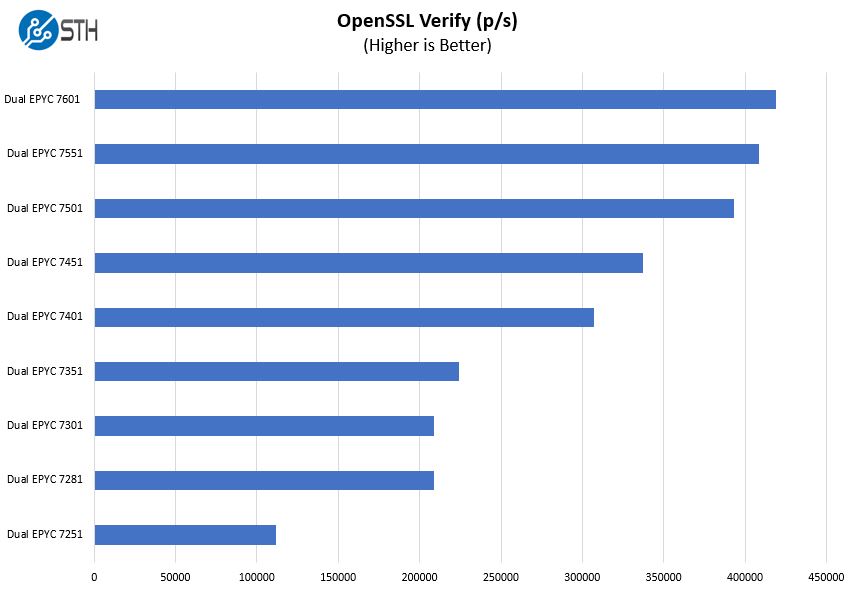
Again solid performance. OpenSSL is a foundational element of current-generation infrastructure so seeing ample ranges of performance is important.
Chess Benchmarking
Chess is an interesting use case since it has almost unlimited complexity. Over the years, we have received a number of requests to bring back chess benchmarking. We have been profiling systems and are ready to start sharing results:
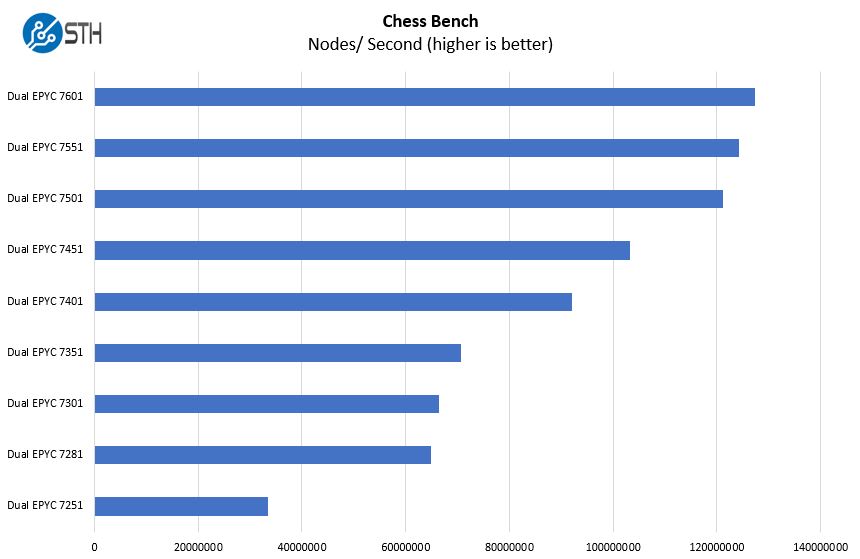
Overall, we can see the impact of the higher-end SKUs in the Supermicro AS-1123U-TR4 server. Each major core count increment has the makings of a step function based on core counts.
Next, we will look at system power consumption and then cover some final thoughts.




A criticism of STH reviews is that they don’t put price in. These barebones are like $1600 and available from channel partners. For a barebones that is about right but if you’re loading with RAM, CPUs, a 25/100Gb NIC, and 10 drives the $1600 is a small cost overall.
When are we gonna see 10x nvme? That’s really the sweet spot for EPYC.
Good lookin’ system though and really thorough review. You guys have kicked it up a notch on the server reviews.
Too bad this isn’t ten NVMe like the Dell R6415. It looks really nice and since we’re doing NVMe-oF attached storage these days with less local it’s fine for us. Something to talk to our reseller about. Price is really reasonable here Tyrone.
KILLS me that they didn’t do 4 NVMe.
Why did they do a x8 internal on the riser not an x16? They’ve got risers with that. Since 8 SAS3 isn’t going to do us much good an x16 internal slot filled with 4 M.2’s I’d say is ideal.
I’m with these guys. I want one. If you could get the 7401’s at 7401P price I’d have a stack of these already.
@Harold Walters, @Rao76
Have you look at TYAN’s GT62F-B8026?
It got 10 x NVMe + 2 x NVMe M.2.
https://www.tyan.com/Barebones_GT62FB8026_B8026G62FE10HR
@George not the same class right? Single socket.
Have you also noticed that you have to disable “above 4G decoding” in bios in order for 100G Connect-x 4 to initialize properly?
Also, it should be worth mentioning that if you fully populate dimm slots, memory frequency goes down to 2133MHz.
For those looking for NVMe, the SMC site shows two versions of the AS-1123US.
AS-1123US-TR4 = 10 x 2.5 SATA + 2 x NVMe
AS-1123US-TN10RT = 10 x U.2 NVMe
Really great review STH. Looking forward to getting a few of these.
@Jure: please check the manualon page 34. Pick the right dimms and in most situations you wil have 2666mhz.
@tyrone saddleman
Yes it is rather unfortunate that NAND and RAM aren’t going to be cheaper any time soon. Which means the overall cost of Intel / AMD is becoming much smaller in % of TCO. Although right now AMD is selling as much EPYC as they could.